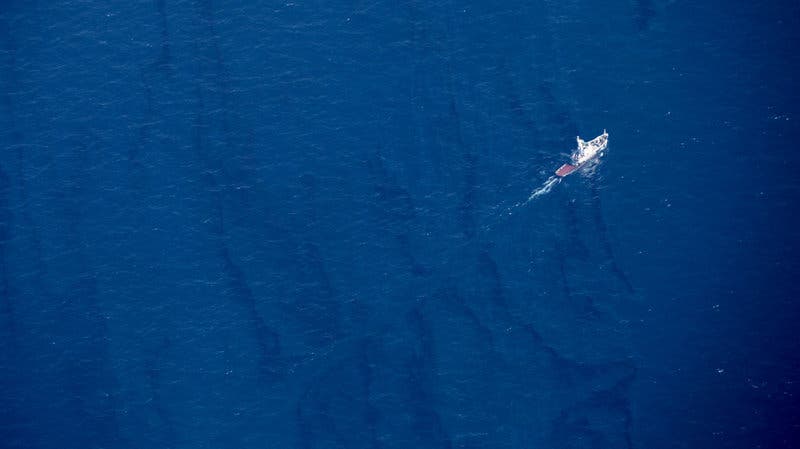Satellites watching over the remains of Iranian tanker Sanchi, which sank days ago with all hands on deck off the coast of China, are revealing a dangerous legacy: several large slicks that stretch for miles in the East China Sea.

Image via Xinhua.
Earlier this month, Panama-registered tanker Sanchi collided with the freighter CF Crystal off the coast of China. The ships caught fire and, powered by the almost 150,000 tons of crude aboard the Sanchi, this inferno raged for over a week before the tanker finally sank.
All of the ship’s crew — 30 Iranians and 2 Bangladeshis — are presumed dead at this point, although only three bodies have been recovered so far. Chinese officials say they are preparing to examine the vessel, now 115 meters (377 feet) below the surface, and the surrounding waters using a robot submarine.
#Iranian oil tanker #Sanchi sunk in East China Sea after burning since Jan. 6th. All crew members are reportedly dead. #Iran pic.twitter.com/MLryrhcDwA
— Tara Kangarlou (@tarakangarlou) January 14, 2018
However, some of the tragic collision’s effects are better seen from afar. Information from China’s State Oceanic Administration says that two oil slicks have been observed in satellite imagery, spreading over a combined 109 square kilometers (42 square miles). The slicks are made-up of natural gas condensate, a light, highly flammable hydrocarbon.
Some effects of the deadly collision have already proven easy to observe from afar. However, citing China’s State Oceanic Administration, Reuters reports that satellite imagery has revealed two slicks of a combined 42 square miles. The slicks contain natural gas condensate, described by the wire service as “an ultra-light, highly flammable crude oil.”
Iran appreciates China for efforts to search missing Iranian sailors aboard oil tanker #Sanchi https://t.co/MIaqFzJE5f pic.twitter.com/jKnJDN4BJc
— China Xinhua News (@XHNews) January 18, 2018
The scale of the Sanchi’s tanks could make this the worst tanker spill since 1991. Chinese authorities are thus scrambling to mitigate the environmental toll of the spill as much as possible. Among other measures, they hope divers will be able to pump out much of the condensate before they have a chance to leak onto the seabed. However, both they and Japanese officials say that the situation is currently under control.
“It is difficult to give an immediate assessment of what kind of environmental impact the oil leak may leave at this point. It depends on how much fuel the ship still had inside,” a spokesman for Japan’s coast guard told AFP on Tuesday.
“We believe the situation is reasonably under control for now.”


